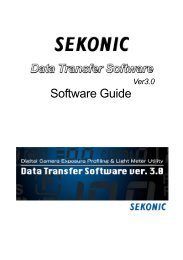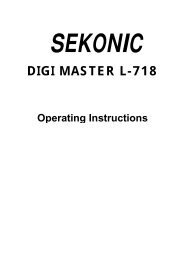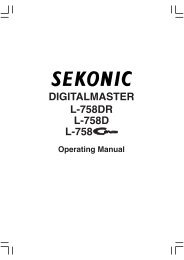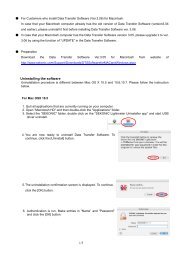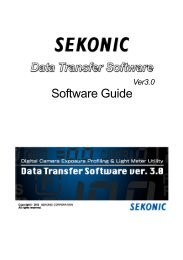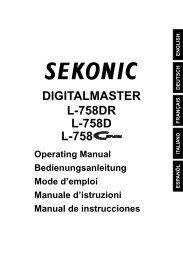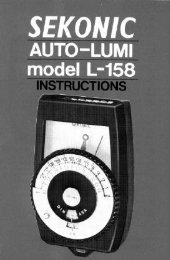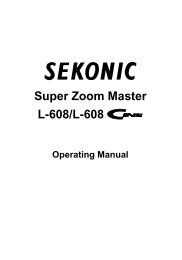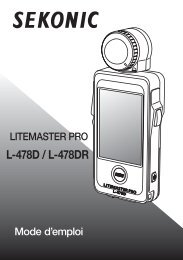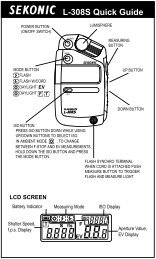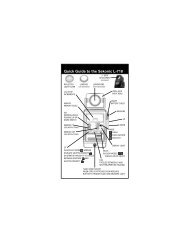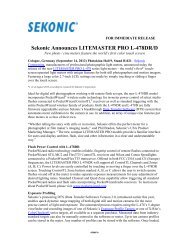Sekonic Cine Brochure
Sekonic Cine Brochure
Sekonic Cine Brochure
Create successful ePaper yourself
Turn your PDF publications into a flip-book with our unique Google optimized e-Paper software.
<strong>Cine</strong>matic lighting is craft on a schedule. It has two masters: The director and the clock.<br />
Good lighting is more than just correct exposure. And correct exposure is more than just the<br />
right camera settings. Properly shaped light is vital to storytelling. It directs the viewer and<br />
sets the mood. And correct exposure is critical to achieving full tonality and proper color<br />
saturation. Both have to be done right and done on time. That is why <strong>Sekonic</strong> is becoming<br />
the cinematographer’s meter of choice.<br />
Light is measured in two ways<br />
Incident Light Metering<br />
Incident metering tells you about the light you are controlling. It’s hemisphere<br />
receptor is designed to integrate all of the illumination that falls on it, and the<br />
subject, including the key light, line light, hair light, eye lights, etc. Besides taking<br />
nearly foolproof exposure readings, incident light meters enable you to set up and<br />
light a scene before the principal talent arrives. They also allow “walking the set”<br />
to measure the evenness of the illumination. The <strong>Sekonic</strong> L-758CINE and L-358<br />
offer the convenience of a retractable Lumisphere. Retract the Lumisphere to read<br />
individual light sources to adjust them to the desired ratio. Extend it to take an<br />
exposure reading at the subject position.<br />
Reflected Light Spot Metering<br />
Reflected light metering tells you about the scene and subject. Different from<br />
incident light metering that produces readings only for the middle of the exposure<br />
range, reflected light spot metering can show you where the edges are. To get the<br />
most out of a spot meter, use it to measure the brightest and darkest areas you<br />
want in the scene to determine the scene brightness range. This will help you light<br />
the scene to fit your digital camera or film. The L-758CINE’s analog scale, 9-reading<br />
memory and averaging functions enable quick measurement of the brightness<br />
range and producing an averaged center point. Then a simple skin tone or gray card<br />
reading at the talent position will tell you where to start. Spot metering with<br />
this precision requires that you know the dynamic range of your DV camera or film.<br />
The L-758CINE’s Latitude Display can be programmed to mirror the dynamic range<br />
of your digital camera or film.<br />
3 SEKONIC.com



